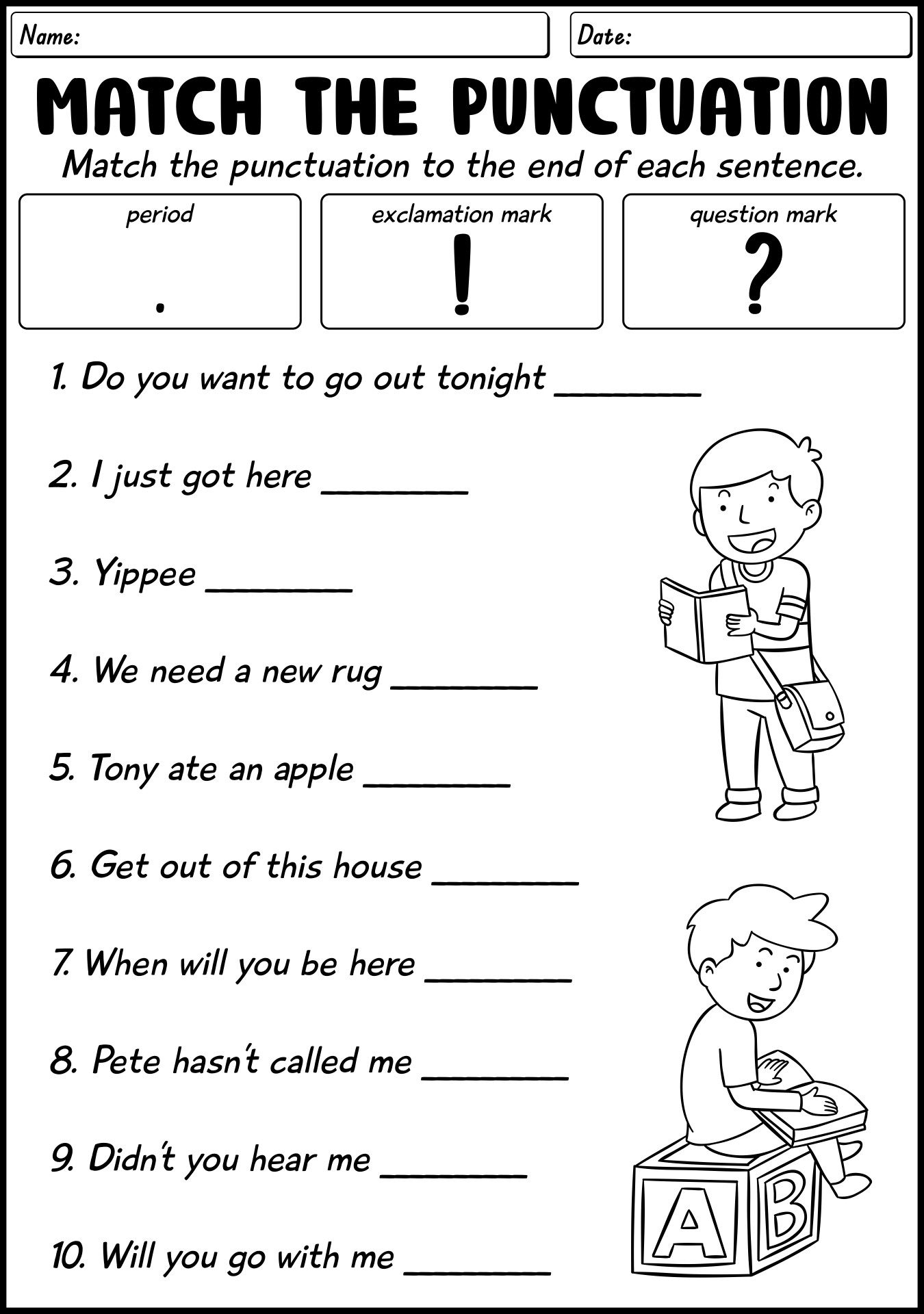
Mastering the Marks: A Comprehensive Guide to the Power of Punctuation Worksheets
Imagine reading a sentence where every word runs into the next, where questions sound like statements, and where the intended meaning is lost in a jumble of letters. This chaotic scenario highlights the indispensable role of punctuation in written communication. Punctuation marks are the silent conductors of language, guiding readers through the rhythm, tone, and precise meaning of a text. Without them, even the most eloquent words can become ambiguous, misleading, or outright nonsensical.
Yet, for many learners, mastering punctuation can feel like navigating a complex maze. The rules are numerous, the exceptions can be tricky, and the nuances often subtle. This is where punctuation worksheets emerge as an invaluable tool in the educational arsenal. They provide structured, focused practice that helps solidify understanding, build confidence, and ultimately, lead to clearer, more effective writing.

The Indispensable Role of Punctuation
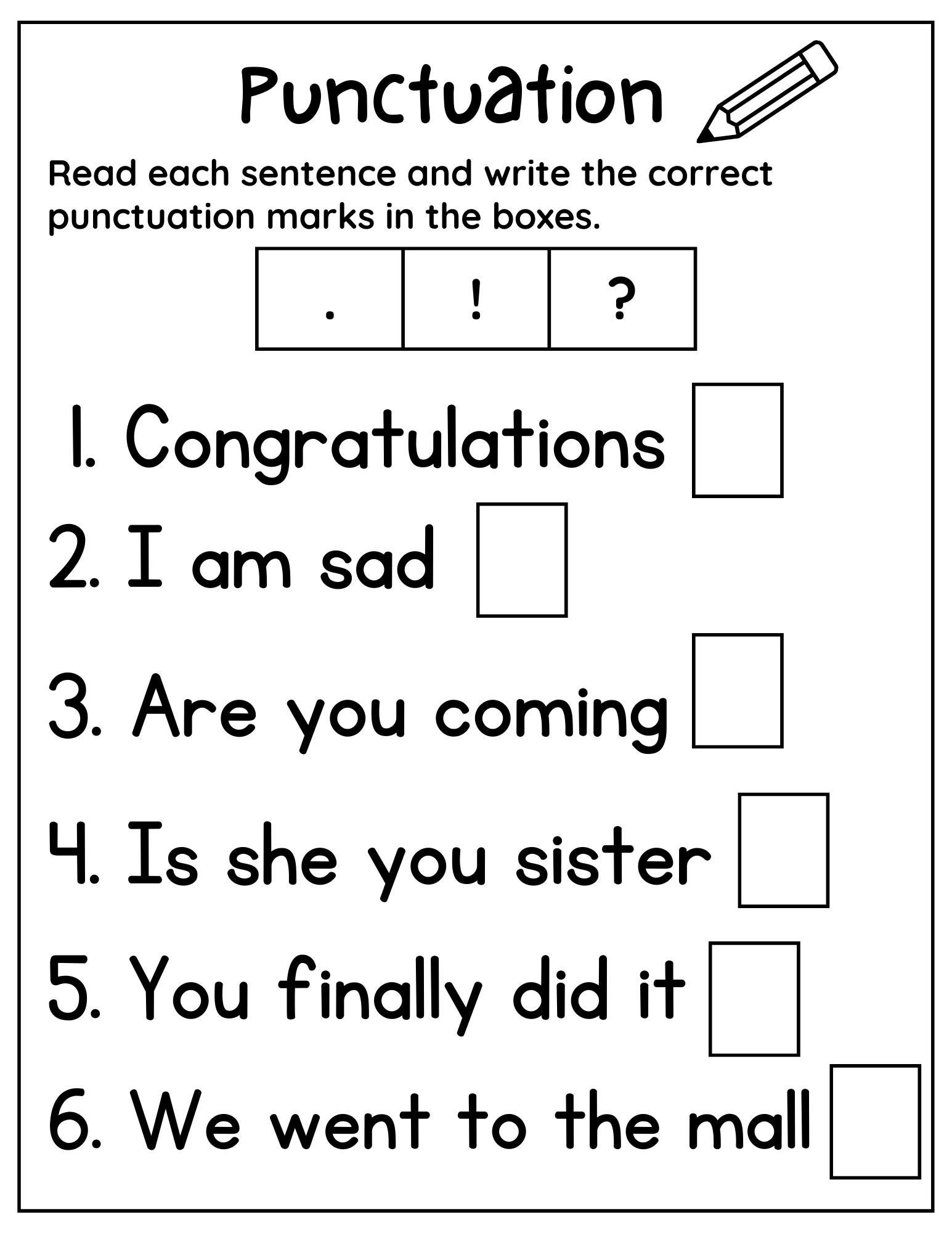
Before delving into the specifics of worksheets, it’s crucial to reiterate why punctuation matters so profoundly. Punctuation serves several critical functions:
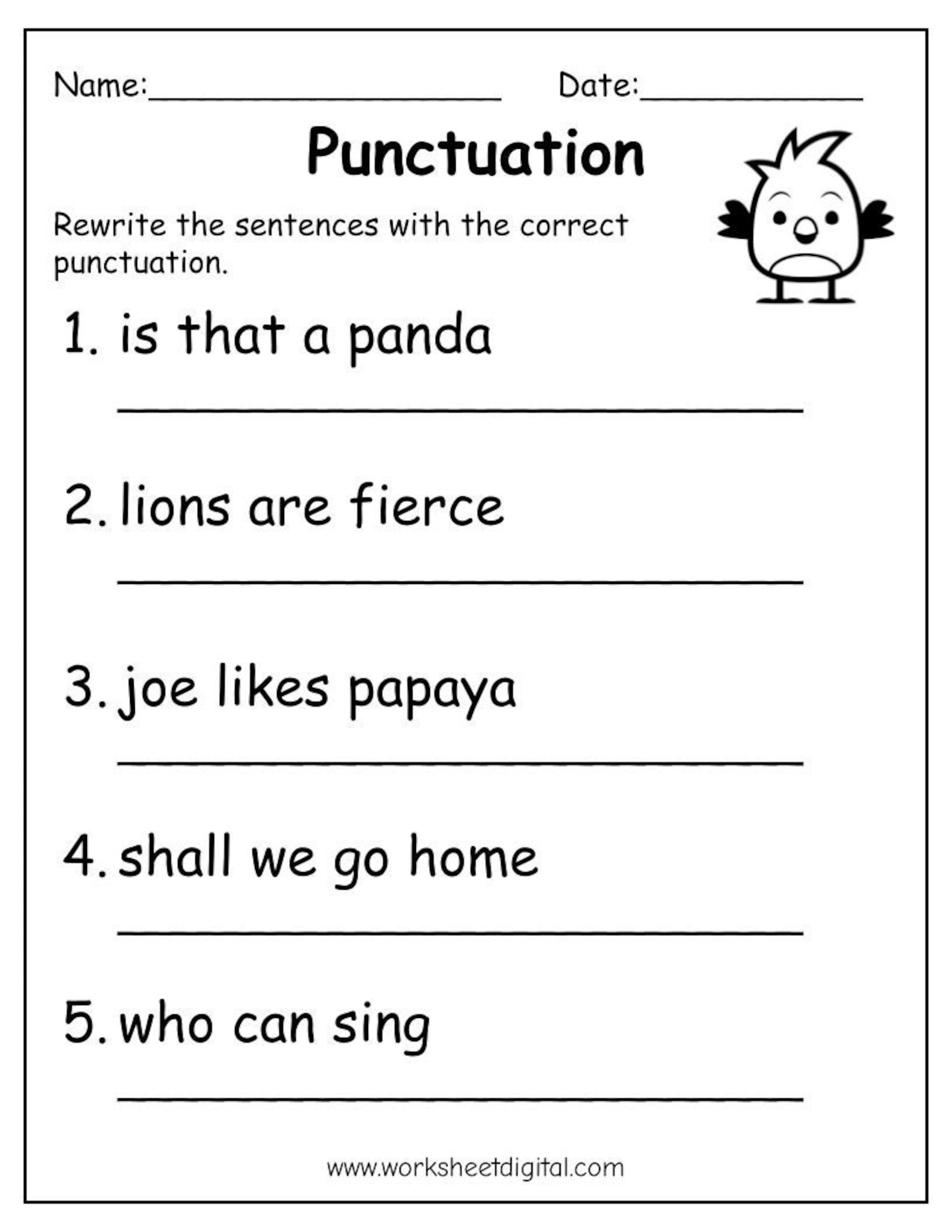
- Clarity and Meaning: The most fundamental role. A misplaced comma or a missing period can drastically alter a sentence’s meaning. Consider "Let’s eat, Grandma!" versus "Let’s eat Grandma!" The comma literally saves a life!
- Rhythm and Flow: Punctuation marks act as signposts, indicating pauses, stops, and shifts in thought, making text easier and more enjoyable to read.
- Tone and Emotion: An exclamation mark conveys excitement or urgency, a question mark indicates inquiry, and ellipses suggest a trailing thought or omission.
- Professionalism and Credibility: Correct punctuation reflects attention to detail and a command of language, which is vital in academic, professional, and even casual communication. Errors can undermine a writer’s credibility.

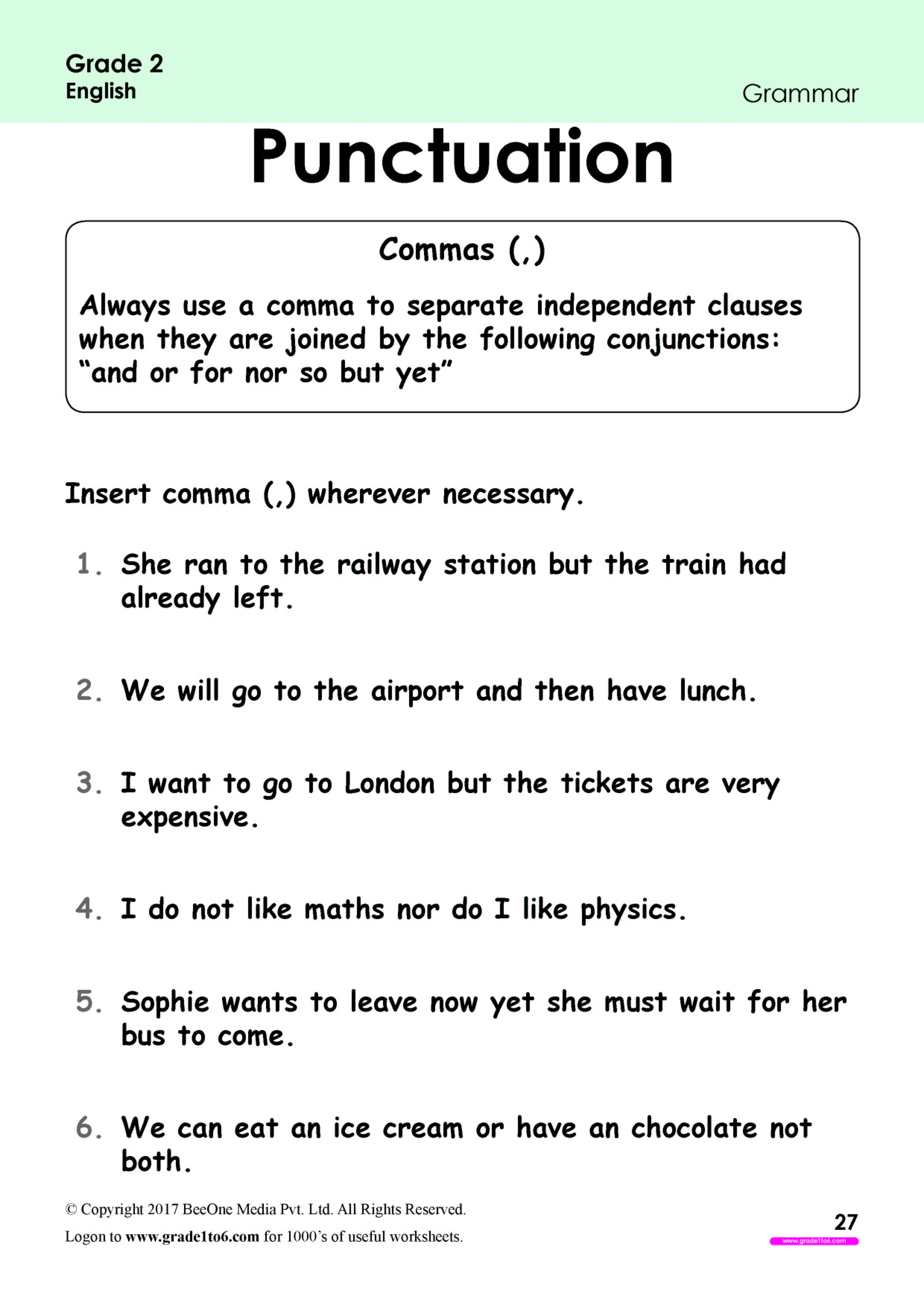
Given this importance, effective teaching and learning strategies are paramount, and this is precisely where the structured practice offered by punctuation worksheets shines.

What Exactly Are Punctuation Worksheets?
At their core, punctuation worksheets are structured exercises designed to help students practice and reinforce their understanding of various punctuation rules. They typically present sentences, paragraphs, or even short passages that require the application of specific punctuation marks. These exercises can range from simple fill-in-the-blanks to complex error identification and correction tasks.
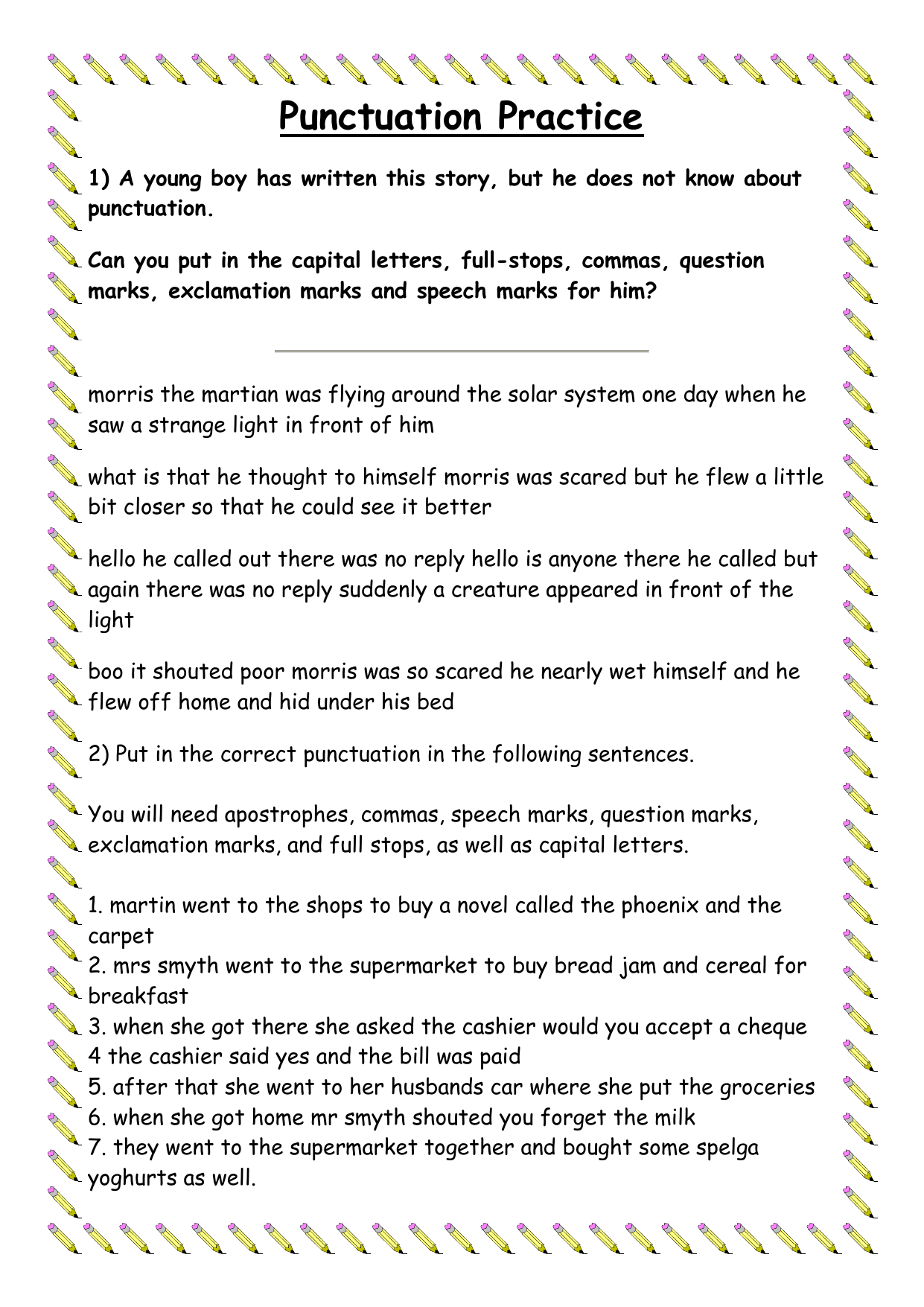
They are not merely busywork; they are carefully constructed learning tools that break down the complex system of punctuation into manageable, digestible segments. By focusing on one or a few rules at a time, worksheets allow learners to build proficiency incrementally, addressing specific weaknesses before moving on to more advanced concepts.
The Myriad Benefits of Utilizing Punctuation Worksheets

The widespread use of punctuation worksheets in classrooms and for self-study is testament to their effectiveness. Here are some key benefits:
- Reinforcement of Rules: After a lesson on commas, a worksheet provides immediate, hands-on practice, helping to cement the rules in the student’s mind. Repetition through varied exercises is key to mastery.
- Active Learning: Worksheets require students to actively apply what they’ve learned rather than passively listening. This active engagement leads to deeper understanding and better retention.
- Diagnostic Tool: Teachers can use worksheets to quickly assess students’ understanding and identify common errors or areas where further instruction is needed. For self-learners, they pinpoint specific weaknesses.
- Self-Paced Learning: Students can work through worksheets at their own speed, revisiting difficult concepts as needed. This is particularly beneficial for differentiated instruction.
- Variety of Exercise Types: Worksheets come in many forms, preventing boredom and catering to different learning styles. This variety keeps students engaged and challenges them in new ways.
- Building Confidence: Successfully completing exercises helps build confidence in a student’s ability to use punctuation correctly, which translates into more confident writing.
- Preparation for Assessments: Regular practice with worksheets prepares students for standardized tests and written assignments where correct punctuation is often a grading criterion.
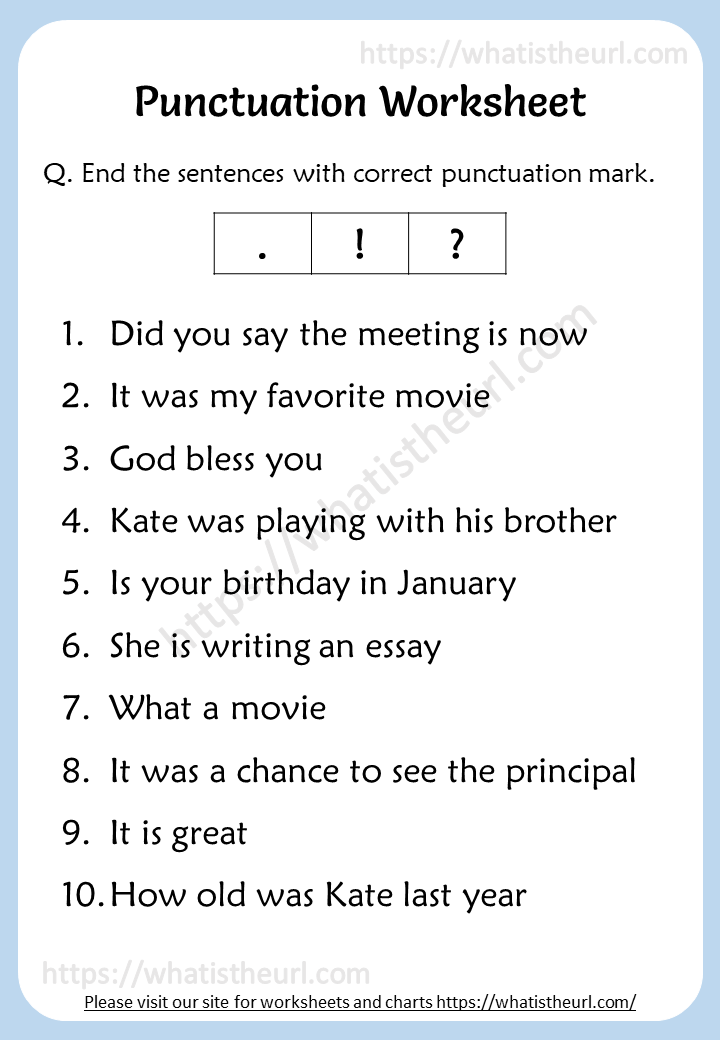
Navigating the Landscape of Punctuation Worksheets: Types and Progression
The world of punctuation is vast, and so too is the range of worksheets available. They can be categorized by the specific punctuation mark they focus on, the complexity of the rules, and the type of exercise they present.
By Punctuation Mark/Complexity Level:
- Beginner Worksheets (Periods, Question Marks, Exclamation Marks): These introduce the most basic end-of-sentence punctuation. Exercises might involve adding the correct mark to simple sentences or identifying sentences that require a specific mark.
- Comma Worksheets: Commas are notoriously tricky, so dedicated worksheets are essential. They cover various uses:
- Separating items in a list (serial commas).
- Joining independent clauses with coordinating conjunctions (FANBOYS).
- Setting off introductory elements.
- Setting off non-essential clauses or phrases.
- Separating adjectives.
- In direct address.
- Apostrophe Worksheets: Focus on possession (singular and plural nouns) and contractions (e.g., "it’s" vs. "its," "they’re" vs. "their"). These often involve identifying the correct usage or correcting errors.
- Quotation Mark Worksheets: Cover direct speech, titles of short works, and sometimes ironic usage. Emphasis is often placed on correct placement with other punctuation (commas, periods).
- Semicolon and Colon Worksheets: These target more advanced usage, such as connecting closely related independent clauses (semicolon) or introducing lists, explanations, or quotes (colon).
- Hyphen and Dash Worksheets: Distinguishing between hyphens (compound adjectives, prefixes) and various dashes (em dash for emphasis/interruption, en dash for ranges) can be complex and benefits greatly from specific practice.
- Parentheses, Brackets, and Ellipses Worksheets: These cover specialized uses for additional information, editorial insertions, and omissions, respectively.
By Exercise Type:
- Fill-in-the-Blanks: Students insert the correct punctuation mark into a given sentence.
- Error Identification and Correction: Students read sentences or paragraphs and identify punctuation errors, then correct them. This is often more challenging as it requires a deeper understanding.
- Rewriting Sentences: Students rewrite sentences to incorporate specific punctuation rules, such as combining two sentences using a semicolon or adding introductory clauses with commas.
- Sentence Combining: Students are given several short sentences and asked to combine them into longer, more complex sentences, using appropriate punctuation to maintain clarity.
- Multiple Choice: Students select the correctly punctuated sentence from a set of options.
- Creative Writing Prompts: Students are given a prompt and asked to write a short paragraph or story, with a specific focus on applying learned punctuation rules. This bridges the gap between isolated exercises and actual writing.
- "Punctuate the Paragraph": Students are given an unpunctuated paragraph and must add all necessary marks. This is a comprehensive exercise that tests a range of skills.
From simple fill-in-the-blanks for beginners to complex sentence restructuring for advanced learners, the versatility of punctuation worksheets makes them adaptable to any educational level.
Crafting or Selecting Effective Punctuation Worksheets
Not all worksheets are created equal. To maximize their learning potential, consider these characteristics:
- Clear Instructions: Students should know exactly what is expected of them.
- Targeted Practice: Each worksheet should ideally focus on one or a few related punctuation rules to avoid overwhelming the learner.
- Varied Exercises: A good worksheet offers different ways to practice the same concept (e.g., identification, insertion, correction).
- Gradual Difficulty: Worksheets should progress from simpler to more complex applications of a rule.
- Real-World Context: Whenever possible, sentences and paragraphs should reflect realistic language use, not just isolated, contrived examples.
- Answer Keys: Crucial for self-assessment and for teachers to quickly check work. Explanations for answers are even better.
- Engaging Content: While the focus is on mechanics, using interesting topics or relatable scenarios can boost student motivation.
- Age and Skill Appropriateness: The complexity of the sentences and vocabulary should match the learner’s reading level.
Integrating Worksheets into a Holistic Learning Strategy
While incredibly useful, punctuation worksheets should not be the sole method of teaching or learning punctuation. They are most effective when integrated into a broader language arts curriculum:
- As Warm-Ups: A quick worksheet at the start of a class can activate prior knowledge.
- For Homework: Reinforces concepts learned in class.
- In-Class Practice: Allows teachers to observe students’ struggles and provide immediate feedback.
- Group Work: Students can collaborate on worksheets, discussing rules and peer-correcting.
- Differentiated Instruction: Provide different levels of worksheets to cater to varying student needs.
- Supplements to Reading and Writing: After reading a text, students can analyze its punctuation; after writing, they can use worksheets to address common errors in their own work.
- For Self-Study: Individuals can use them to strengthen specific weaknesses at their own pace.
The key is to balance focused worksheet practice with extensive reading (to see punctuation in action) and authentic writing (to apply punctuation in meaningful contexts).
Addressing Common Challenges and Maximizing Impact
Even with the best intentions, challenges can arise when using punctuation worksheets:
- Boredom/Monotony: To combat this, vary worksheet types, incorporate gamification elements, or use competitive group activities.
- Over-reliance: Ensure students understand that the goal is not just to ace the worksheet, but to apply the rules in their own writing. Regularly connect worksheet practice to real-world writing tasks.
- Lack of Context: If worksheets use only isolated, meaningless sentences, students may struggle to transfer the knowledge. Use paragraphs or short narratives that provide context.
- Difficulty Transferring Knowledge: Some students might perform well on worksheets but still make errors in their essays. Encourage self-editing using punctuation checklists derived from common worksheet errors. Peer review can also be helpful.
The Future of Punctuation Learning: Beyond the Worksheet
While traditional print punctuation worksheets remain effective, the digital age offers new possibilities. Interactive online worksheets, educational apps, and gamified platforms provide instant feedback, track progress, and often present rules through engaging animations or mini-games. These digital tools can complement or even enhance the traditional worksheet experience, making learning punctuation more dynamic and accessible. However, the core principle of focused, repetitive practice remains timeless, whether on paper or screen.
Conclusion
Punctuation is the backbone of clear written communication, and its mastery is non-negotiable for anyone aspiring to write effectively. While often overlooked, the humble punctuation worksheet stands as a powerful, versatile, and highly effective tool in achieving this mastery. By providing targeted practice, immediate feedback, and a structured approach to learning, these worksheets empower learners of all ages to conquer the complexities of commas, periods, apostrophes, and beyond.
Ultimately, the strategic incorporation of punctuation worksheets into any learning regimen can significantly accelerate mastery, transforming hesitant writers into confident communicators who wield punctuation with precision and purpose. Embrace the power of well-designed punctuation worksheets – your writing will thank you for it.
